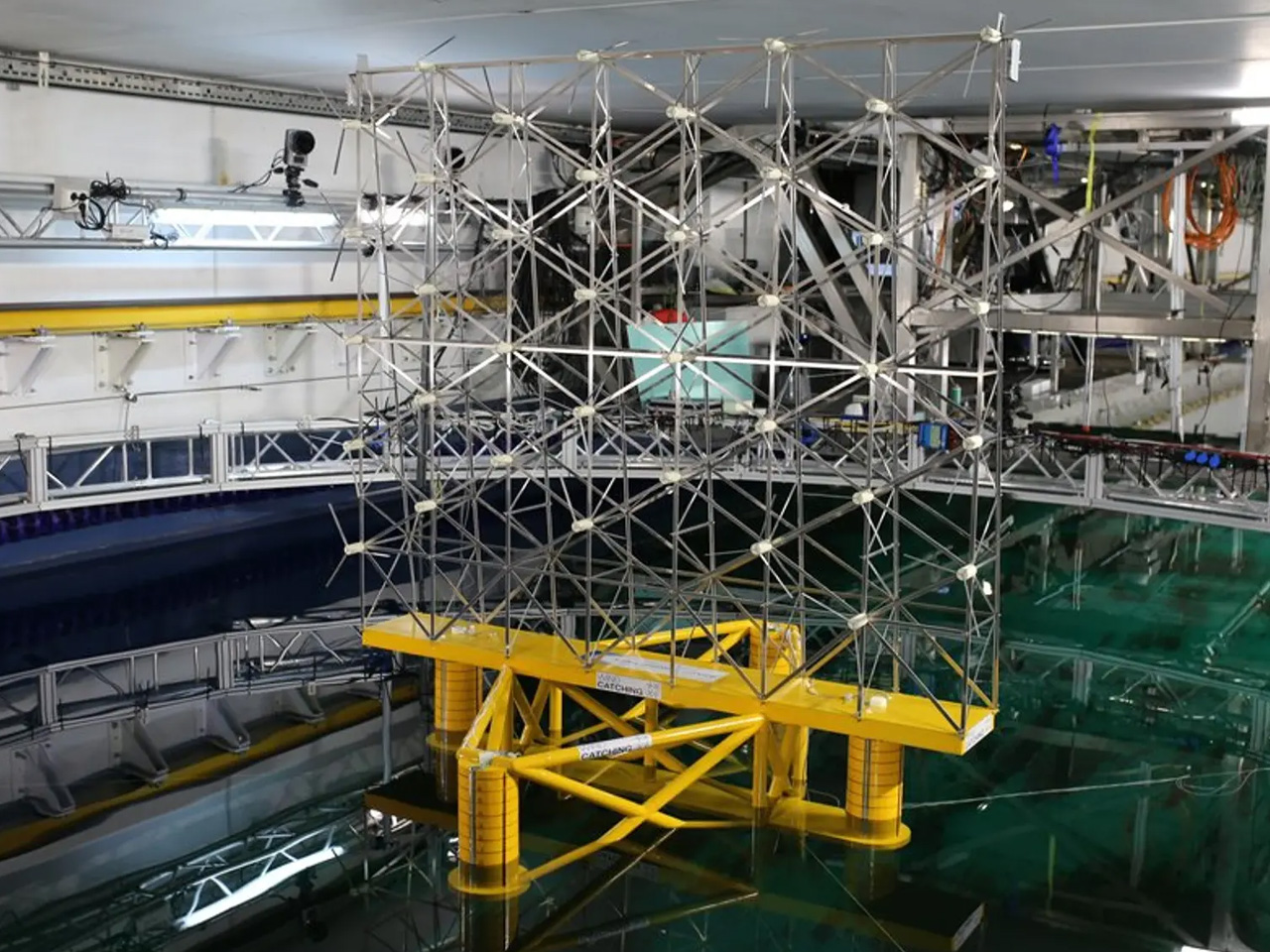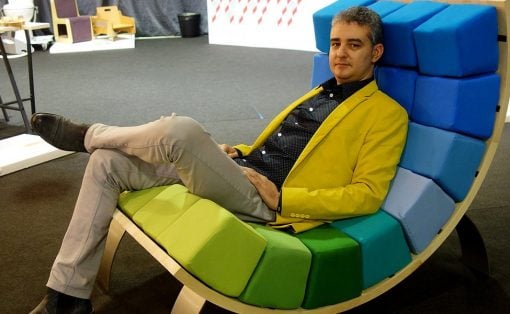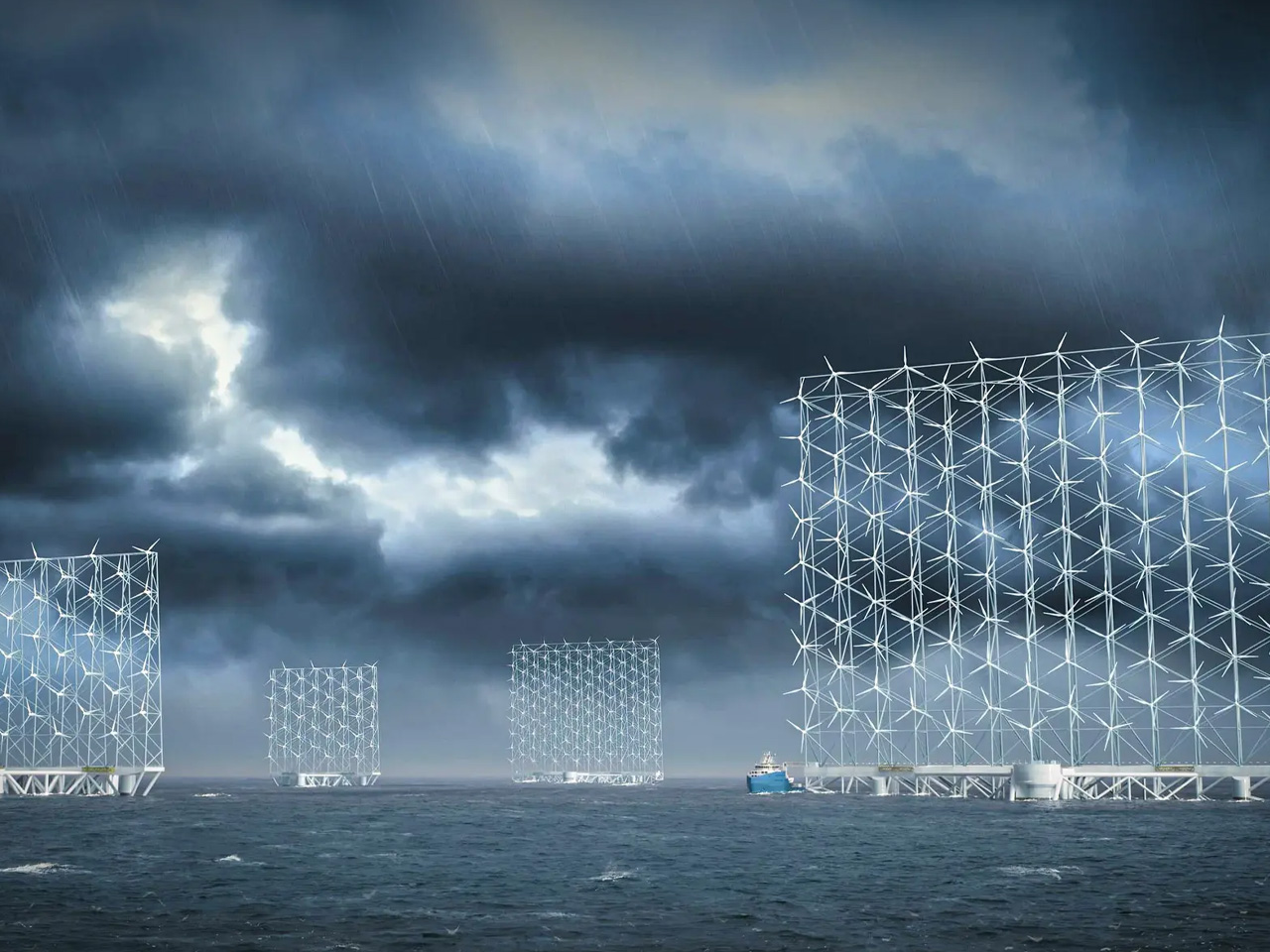
Norway’s Wind Catching Systems (WCS) have created an impressive array of small rotors arranged in a neat grid to achieve up to 126 MW, or five times the energy of a 15-MW single-rotor turbine in the North Sea conditions. Usually, wind turbines are designed to be larger with bigger rotors to pull in more megawatts, but WCS went for a more subtle and functional approach. Besides offering a superior energy output, the innovative Windcatcher design facilitates simpler installation than typical wind turbines, offering easier maintenance and simpler scalability. It also has a longer life service of around 50 years compared to the 30-year life cycle of bigger single-turbine units.
Designer: Wind Catching Systems
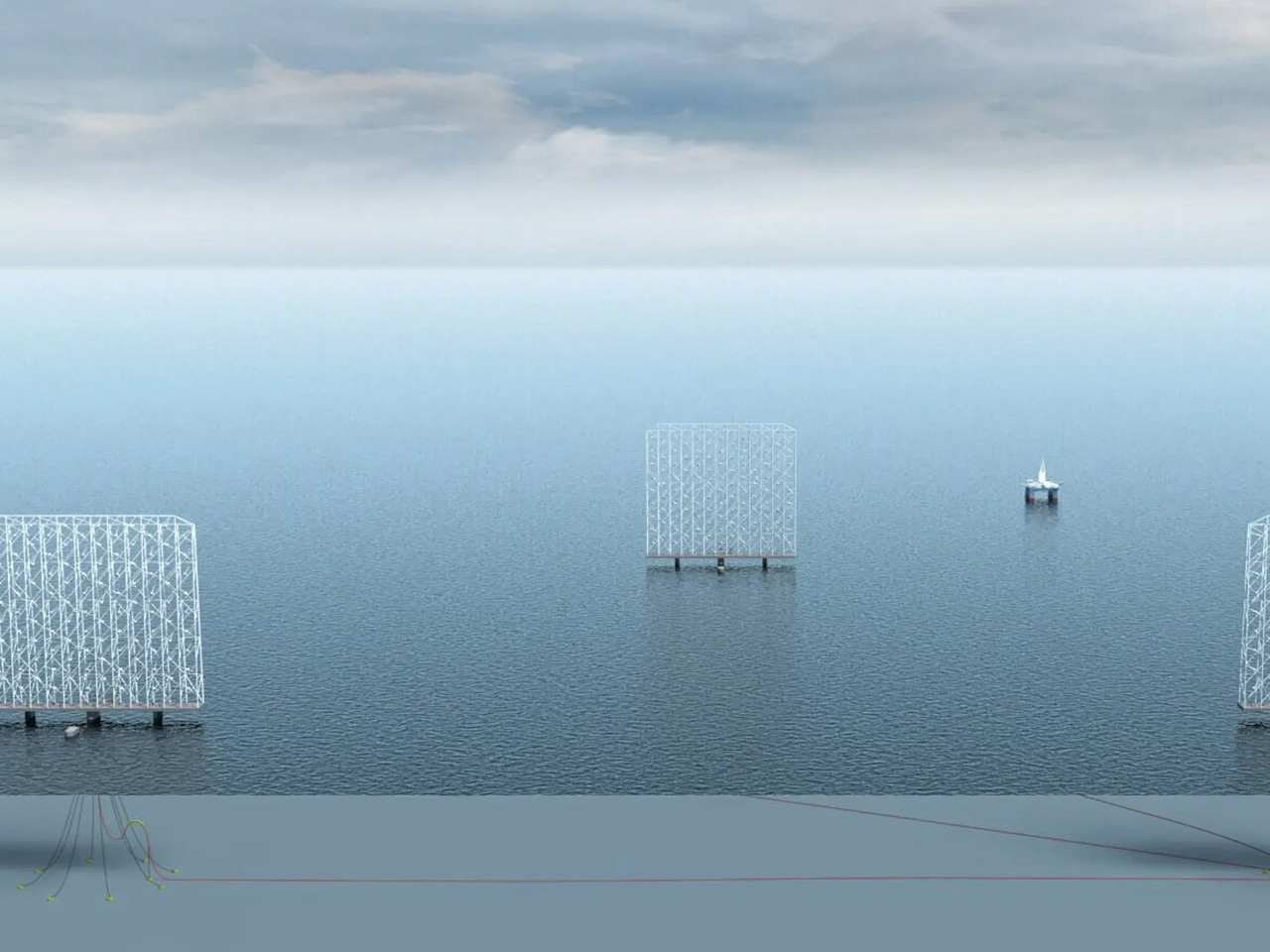
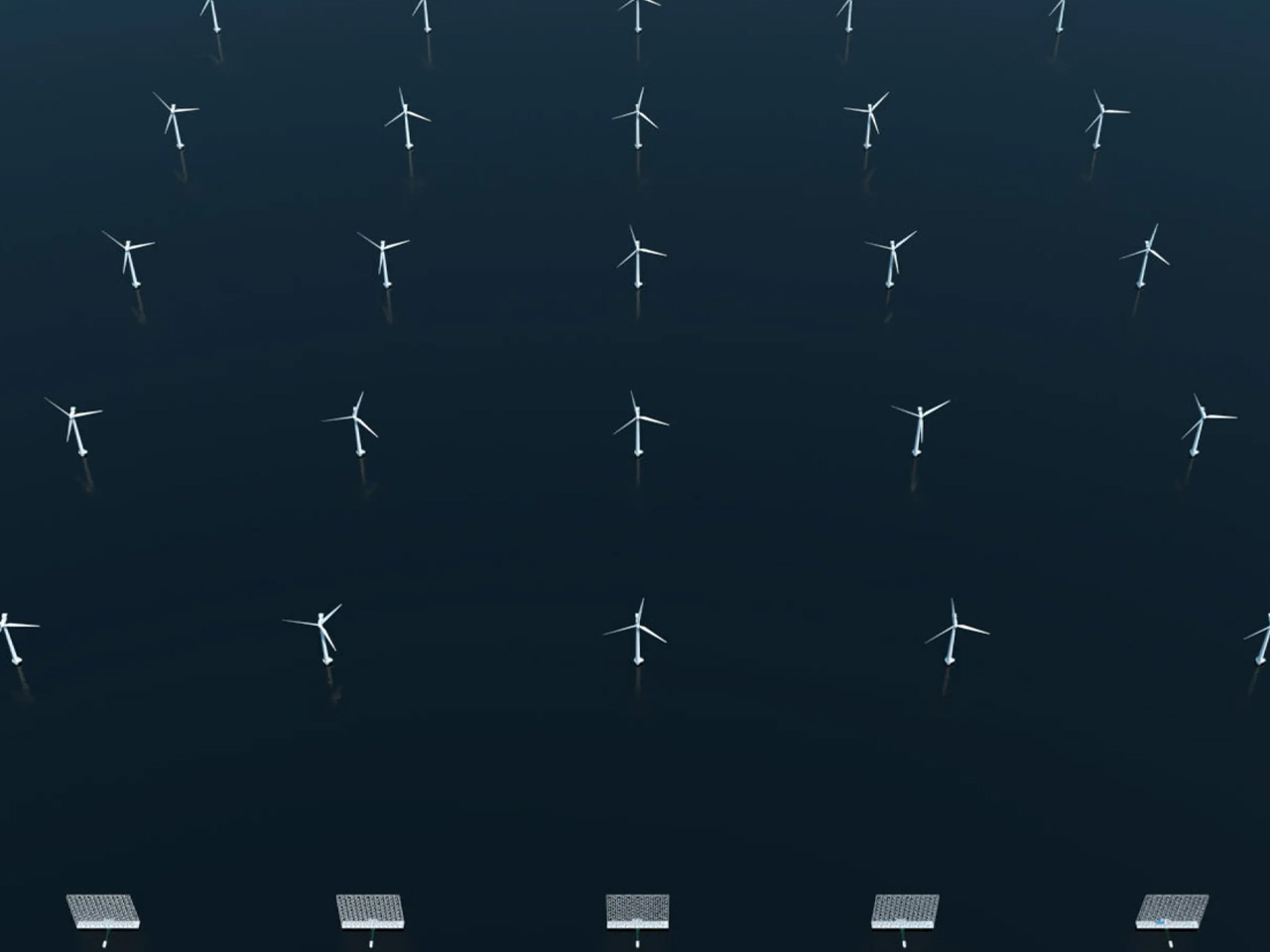
The Windcatcher includes floating supports that are shared between a bunch of small and lightweight turbines that have been tied up in large arrays of structural scaffolding. This distributes the weight of the turbine fans and generators, and the force supplied by the wind between a larger area. The scaffolding serves as the ultimate foundation for small installation and maintenance elevators, which slowly run up and down the generators. Once the main structure has been built, the various working parts will be installed and then maintained with total ease. The system won’t need large generators and massive blades, as it will be logistically easier to build.
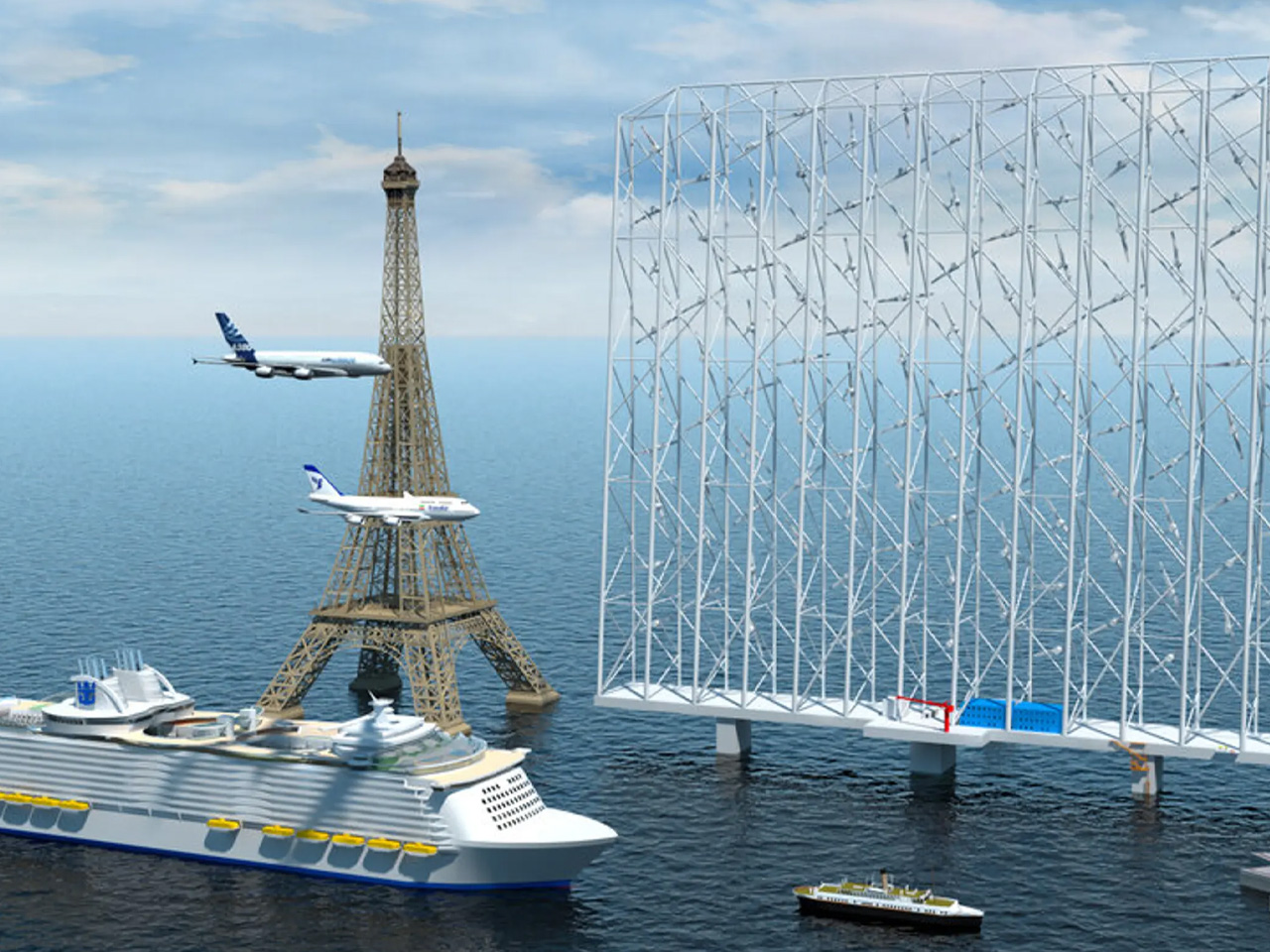
WCS gathered a lot of support in the past couple of years. In 2022 it secured almost US$10 million from GM Ventures and also received grants of NOK22 million (US$2.1 million) and NOK9.3 million (US$0.9 Million), respectively. These grants were provided by Enova SF – a Norwegian government enterprise committed to reducing greenhouse gas emissions and discovering novel and clean energy technologies. The design has also received a stamp of approval from DNV (Det Norske Veritas) – an internationally accredited registrar and classification society that offers services for different industries including maritime, oil, gas, and renewable energies.
